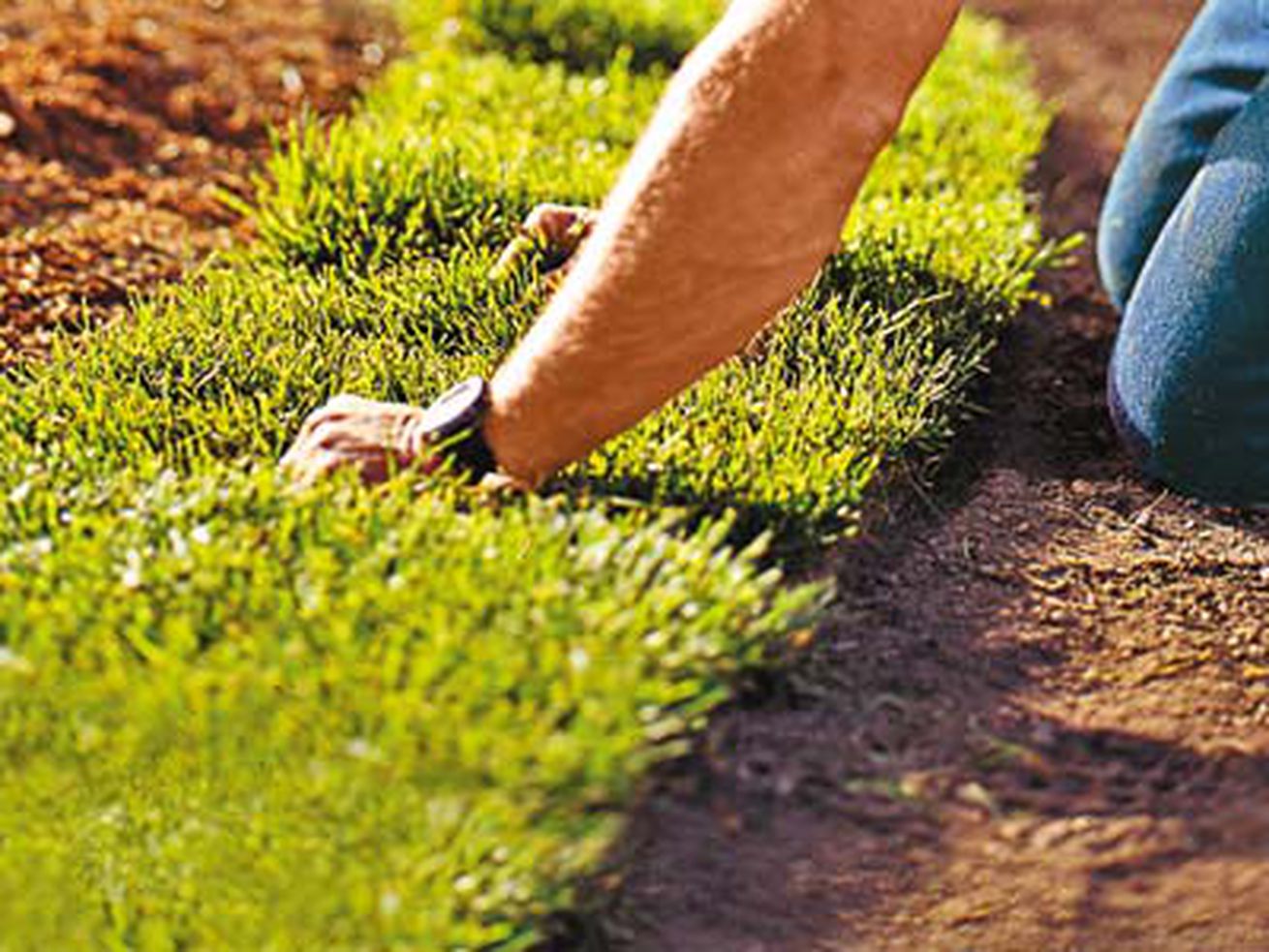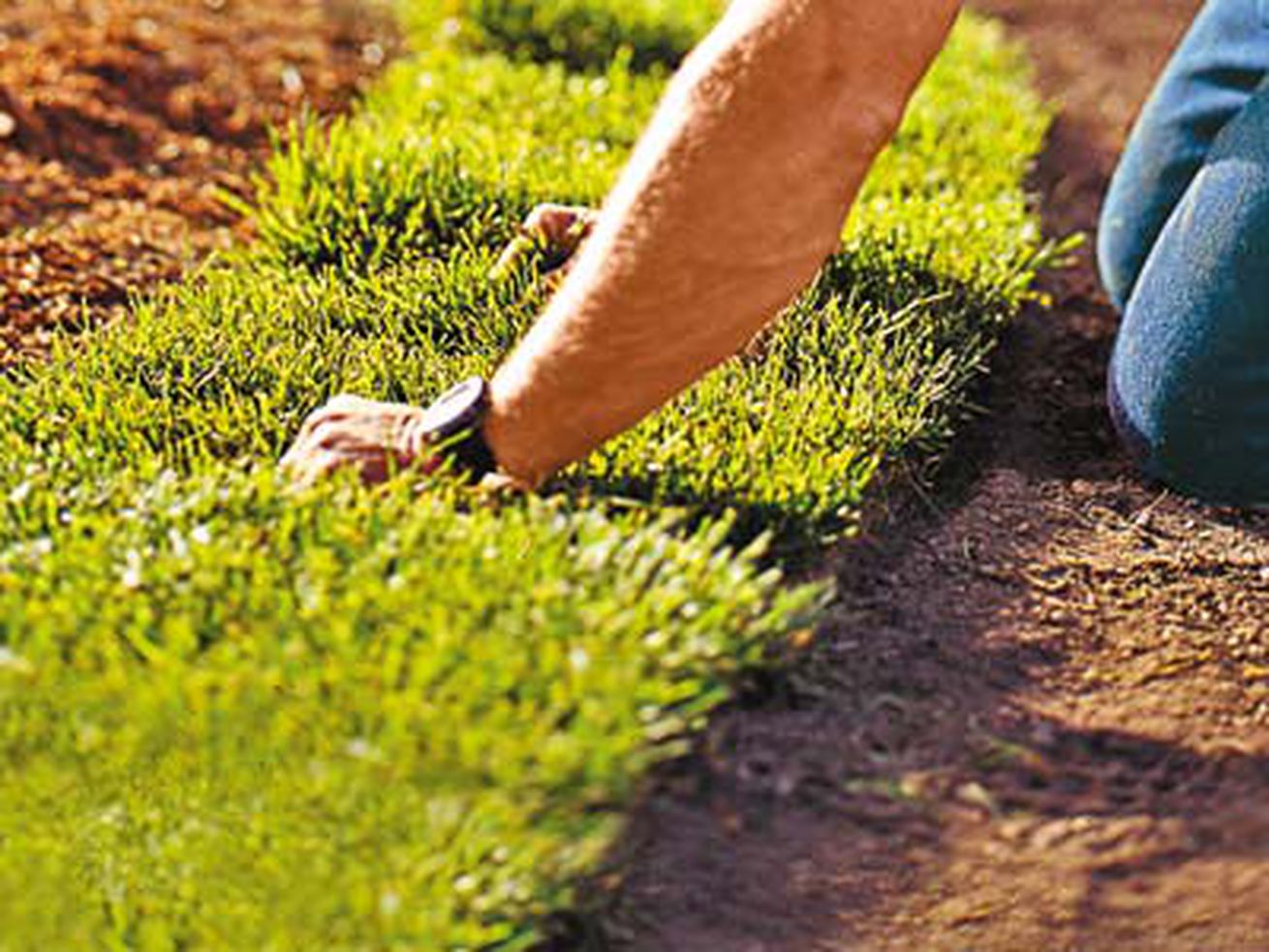9 Steps to a Lush Lawn

>

Want to create a lusher lawn? Read these tips from This Old House landscape contractor Roger Cook.
American homes are host to more than 30 million acres of lawns, which will play host to countless barbecues, picnics, and Frisbee games in the coming months. With proper care, your lawn will look great despite endless hours of barefoot traffic and blazing sun.
This Old House landscape contractor Roger Cook tells us what we should do to keep the grass greener.
Test Your Soil
A soil test takes the guesswork out of lawn care, giving you precise measurements of pH as well as the quantity and availability of nutrients like nitrogen and phosphorus (home kits are usually reliable for pH only). Contact a cooperative extension service to conduct the test; they cost around $20.
Fertilize
There’s no one-size-fits-all formula for springtime—it all depends on the soil and the type of grass you have. Your soil test will offer tips on what amendments to add, or take the results to a gardening center and get their advice.
Opt for a slow-release, organic fertilizer, and apply it to the outer edges of your lawn, then cover the middle, overlapping each pass by a few inches. You may have to mow more frequently afterward since you’re adding nutrients at a time of rapid growth.
Watch Your Calcium Intake
Up to 90 percent of common lawn weeds are linked to a lack of calcium in soil. Ideally, you should have a calcium-to-magnesium ratio of 7 to 1. If yours falls short of that target, spread high-calcium lime over your lawn, which will boost its ability to absorb nitrogen and synthesize proteins, robbing weeds of food.
dd Organic Matter
Early-season grass benefits from added compost, whether you make it yourself or get it from your home center or town. Apply a ½-inch layer over your lawn and rake it into the surface. Finished compost should smell earthy and slightly sweet; avoid using compost that’s still steaming, which indicates it’s not fully decomposed yet. One yard (or 27 cubic feet) will cover 600 square feet.
Stop Crabgrass In Its Tracks
Crabgrass germinates when the soil temperature reaches about 56 degrees F, which happens in mid-April in many regions. Wait until your soil reaches this mark for a few consecutive days, then apply a pre-emergent herbicide (or use corn gluten if you prefer a natural product, available at Bradfield Organics. Crabgrass doesn’t grow well in the shade, so you don’t need to add chemicals in well-shaded parts of your yard.
Pull Up Weeds
Ever notice that weeds pop up right after a spring rain? That’s your cue to pull them—if they’re small and the soil’s moist, they should come out by hand.
Get Your Mower in Shipshape
Dull mower blades tear off grass rather than cutting it clean, leaving ragged tips that invite disease to set in. Holding the blade in a vise, sharpen it with long, smooth strokes using a Dremel blade sharpener or a 10-inch bastard mill file, following the manufacturer’s instructions for the proper angle. During the growing season, sharpen the blade after you’ve used your mower for about 8 to 12 hours.
Let the Grass Grow…a Little
Your grass might be as short as a putting green, but don’t keep it that way. Let it grow to a length of about 3 to 3½ inches, and maintain that height all season. This lets the grass blades shade out weed seeds, and in the summer it shades the soil, reducing evaporation.
Come fall, you can go back to cutting it short—weed seeds aren’t as abundant then, and evaporation is less of a concern. Two exceptions are Bermuda and seashore paspalum grasses, found in the South, which can be kept at a height of 3/4 to 1 inch.
Get Your Sod On
If you’re starting a lawn from scratch, April is the month to lay down sod, when it’s cooler and there’s time for the grass to take root. Ask your seller for grass that suits your yard’s conditions, whether sun, shade, or a combo.
Sod should be fresh when you lay it; beware the rolls that have been sitting outside for a while. Prepare to water, water, water when it’s installed. Your garden center can recommend an appropriate schedule.
